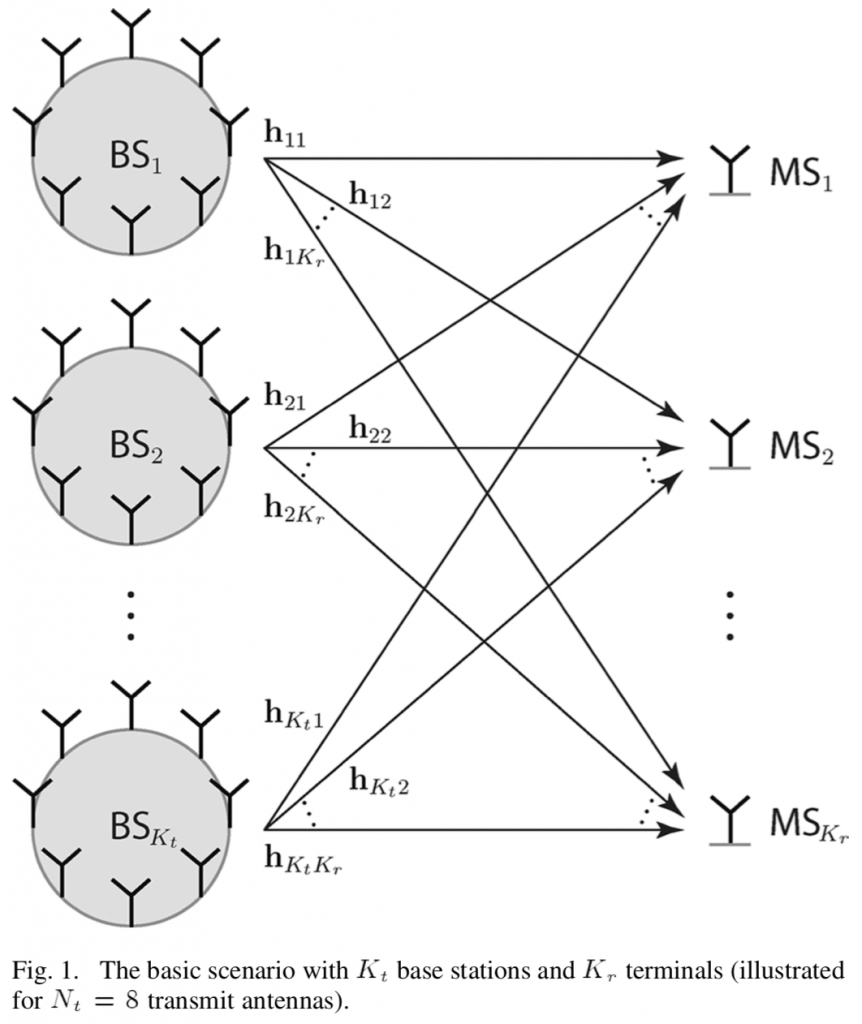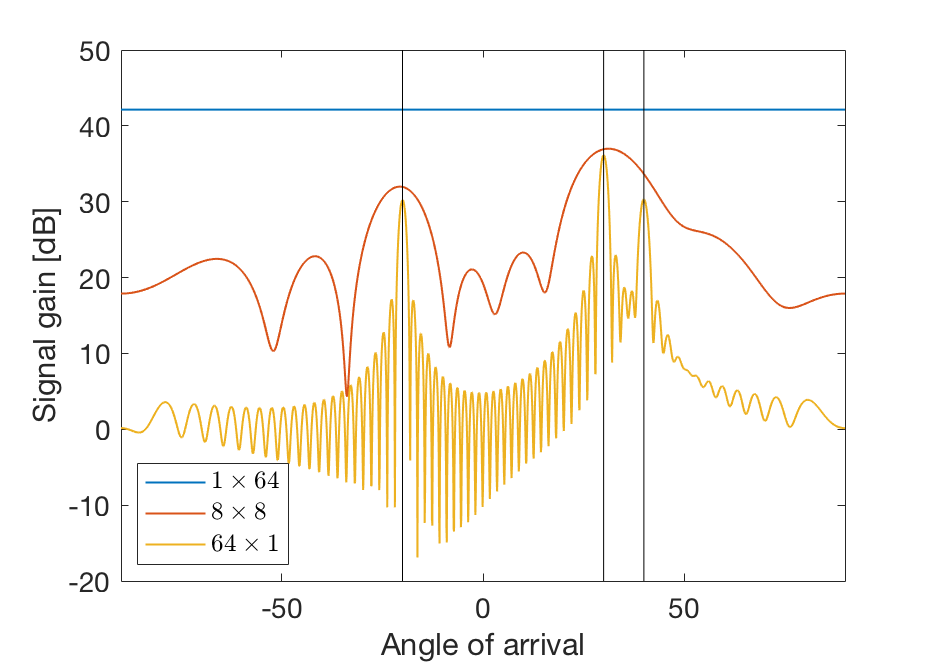By deploying many distributed antennas instead of a few multi-antenna base stations, a more uniform communication performance can be achieved over a coverage area. The peak rates might go down but there is a much higher chance of getting a decent rate with 95% probability. This is the main motivation behind Cell-free Massive MIMO, which is the new name for Network MIMO with a large number of antennas (many more than the number of users). The key difference from conventional ultra-dense networks is that the distributed antennas are cooperating to transmit phase-coherently in the downlink and process the received uplink signals coherently. One promising way to deploy these systems is by using radio stripes.
The first papers on Cell-free Massive MIMO assumed that all antennas have access to the downlink data of all users and take part in the uplink signal detection of all users. This is both impractical and unnecessary in a large network, where each user is only physically close to a subset of the antennas. Hence, it makes practical sense that only those antennas that can reach the user with a signal power that is non-negligible compared to the thermal noise should transmit to that user and participate in the detection of its uplink data.
I designed a framework for this 10 years ago, which I called “dynamic cooperation clusters” (DCC) and it can be readily applied to Cell-free Massive MIMO. The main idea was that every user selects which antennas should serve it in a user-centric manner, which means that any antenna subset can be selected. This stands in contrast to the conventional network-centric approach (which dominated the 4G CoMP literature) where only certain predefined disjoint groups of antennas are allowed to cooperate.
Although the DCC framework is a perfect fit for Cell-free Massive MIMO, the performance analysis that we did 10 years ago was admittedly simplified compared to what is possible with the latest methodology. We considered TDD systems that utilize reciprocity but assumed slowly fading channels that can be estimated without error, thereby avoiding pilot contamination and the computation of ergodic rates. To provide a bridge to the past, we wrote the paper “Scalable Cell-Free Massive MIMO Systems” which revisits the DCC framework in the context of Cell-free Massive MIMO, using the latest analytical methods from the Massive MIMO literature.
Most importantly, the new paper provides an intuitive way to select the user-centric cooperation clusters based on the uplink pilot transmissions. When a user connects to the network, we suggest that the antenna with the best channel condition is given the responsibility to guarantee the user service. The user is assigned to the pilot that is least affected by pilot contamination in that particular region. Moreover, all antennas serve as many users as there are pilots; at most one user per pilot to limit the negative effect of pilot contamination. Under these assumptions, we show that the users get nearly the same rates as if all the antennas serve all users, but with greatly reduced complexity and fronthaul requirements. In conclusion, scalable and well-performing implementations of Cell-free Massive MIMO are possible!
The following video explains the main ideas:




